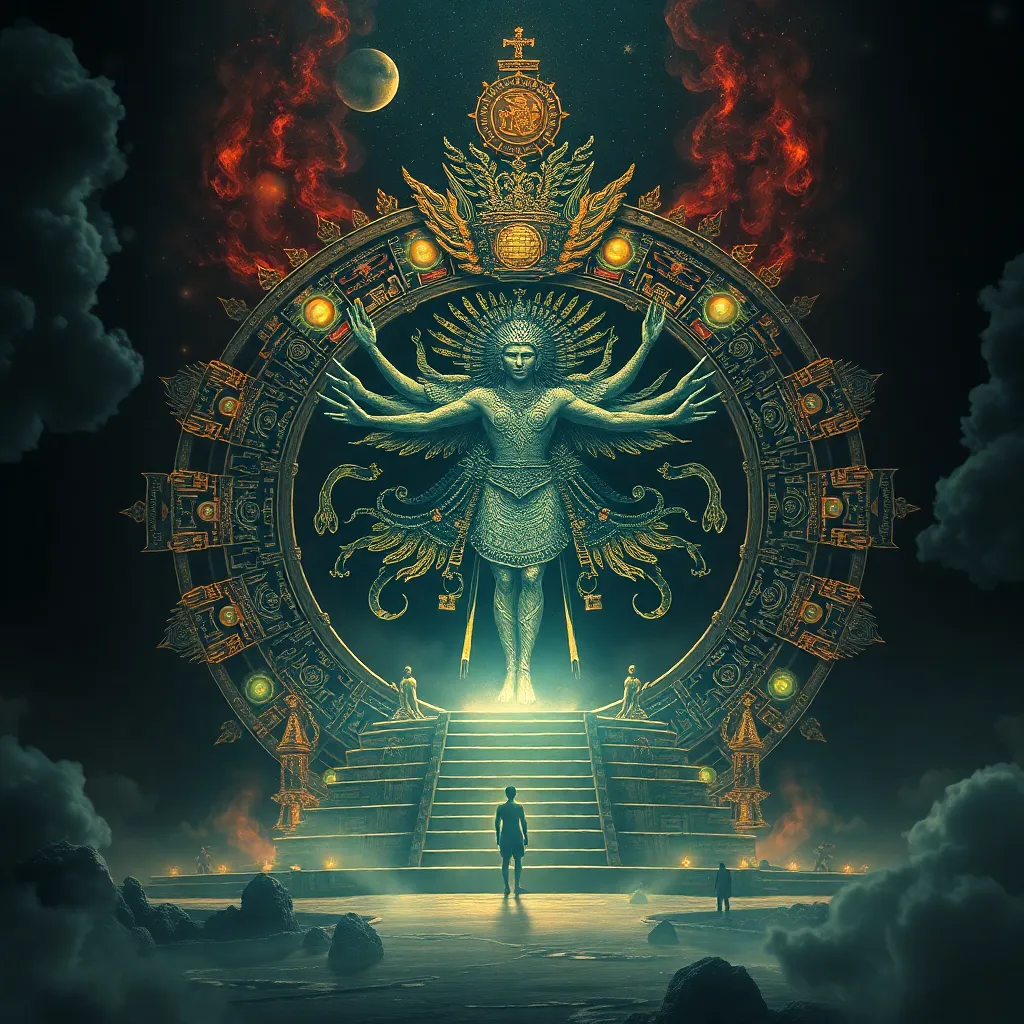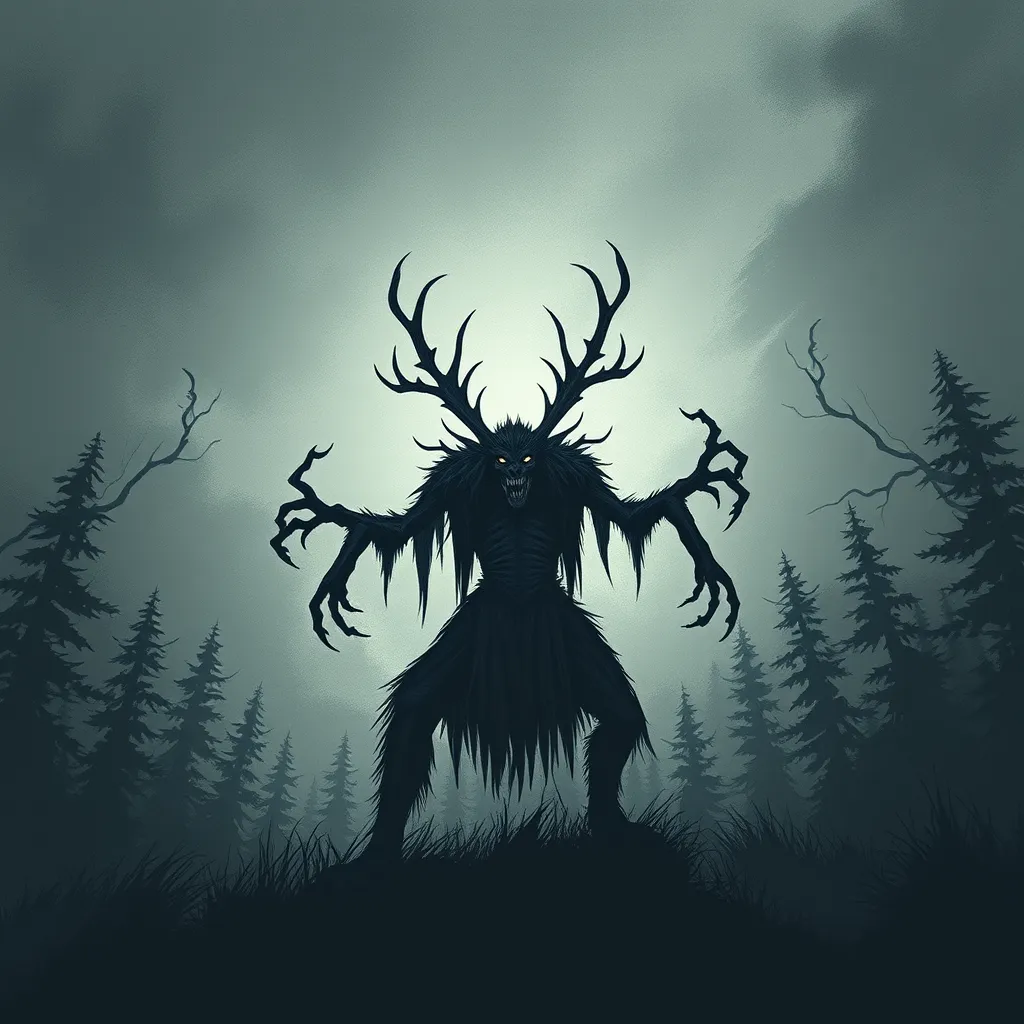The Mayan Concept of the Divine: Itzamná and the Cosmic Order
I. Introduction
The Mayan civilization, known for its advanced knowledge in mathematics, astronomy, and architecture, flourished in Mesoamerica for thousands of years. This vibrant culture had a complex social structure, rich traditions, and a deep understanding of the cosmos, which was reflected in their religious practices and beliefs.
Deities played a crucial role in Maya culture, serving as intermediaries between the divine and the earthly realms. The Mayans worshipped a pantheon of gods, each representing different aspects of life, nature, and the universe. Among these deities, Itzamná stands out as a central figure in Mayan mythology and cosmology, embodying the principles of creation, wisdom, and the cosmic order.
II. The Role of Itzamná in Mayan Cosmology
A. Definition and attributes of Itzamná
Itzamná is often depicted as the supreme god in the Mayan pantheon. He is associated with creation, the sky, and the intellect. Characterized by his benevolent nature, Itzamná is frequently represented as an elderly man with wise features, symbolizing his immense knowledge and experience.
B. Itzamná’s connection to creation and the cosmos
In Mayan lore, Itzamná played a pivotal role in the creation of the universe. He is credited with the formation of the world and the establishment of order from chaos. This act of creation involved the creation of humans, whom he fashioned from maize, a sacred element in Mayan culture.
C. Symbolism of Itzamná in Mayan mythology
Itzamná symbolizes not only the cosmos but also represents the balance between opposing forces. He embodies duality, often associated with both light and dark, life and death, and order and chaos. This dual nature is integral to understanding the Mayan worldview, where balance is essential for harmony in life.
III. The Structure of the Mayan Cosmos
A. The three realms: Heaven, Earth, and the Underworld
The Mayan cosmos is traditionally divided into three realms: Heaven, where the gods reside; Earth, the domain of humans; and the Underworld, known as Xibalba, where the spirits of the deceased dwell. Itzamná is believed to span these realms, governing the connections between them.
B. The significance of the World Tree
The World Tree, or Yaxche, is a vital symbol in Mayan cosmology. It connects the three realms: its roots reach into the Underworld, its trunk stands in the Earth, and its branches extend to the heavens. Itzamná is often associated with the World Tree, signifying his role as a mediator and sustainer of life.
C. How Itzamná mediates between these realms
As a divine figure, Itzamná facilitates communication among the three realms. He is invoked in rituals that aim to maintain balance and harmony within the universe, demonstrating his role as a protector and guide for both the living and the dead.
IV. Itzamná and the Concept of Time
A. The Mayan calendar and its divine connections
The Mayans developed one of the most accurate calendars in the ancient world, which was deeply tied to their cosmological beliefs. Itzamná is associated with the cyclical nature of time, as the calendar reflects the cycles of creation and destruction, echoing his role in the cosmic order.
B. Itzamná’s role in the cyclical nature of time
The concept of time in Maya culture is not linear but rather cyclical. Itzamná’s influence in this cyclical understanding is evident during significant events, such as solstices and equinoxes, which were marked by rituals to honor the gods and ensure the continuation of life.
C. Festivals and rituals related to Itzamná
- Rituals to honor Itzamná often coincide with agricultural cycles.
- Festivals celebrating the harvest were dedicated to him, seeking his blessings.
- Ceremonies were held to invoke Itzamná’s wisdom and guidance for rulers.
V. Itzamná in Maya Art and Iconography
A. Depictions of Itzamná in codices and sculptures
Itzamná appears prominently in Mayan art, including codices, murals, and sculptures. His imagery is often adorned with symbols of wisdom and knowledge, reflecting his esteemed position among the gods.
B. Analysis of artistic symbols associated with Itzamná
Common symbols associated with Itzamná include:
- The serpent, symbolizing knowledge and the connection to the divine.
- The owl, representing wisdom and the night.
- Elements of maize, highlighting his role in creation and sustenance.
C. The influence of Itzamná on other deities and cultural motifs
Itzamná’s attributes influenced other deities within the Mayan pantheon, leading to a rich tapestry of interconnected myths and stories that highlight the complexity of Mayan beliefs.
VI. The Influence of Itzamná on Mayan Society and Governance
A. Itzamná as a patron of rulers and their divine right
Itzamná was considered the patron of rulers, granting them the divine right to govern. Kings would often invoke his name to legitimize their authority and to seek guidance in leadership.
B. Religious practices and their societal implications
The worship of Itzamná influenced various aspects of daily life, from agricultural practices to political decisions. His teachings were embedded in the societal fabric, promoting a culture of reverence for the divine and the cosmos.
C. The integration of Itzamná’s principles in daily life
Itzamná’s principles of harmony and balance were evident in various daily practices, including:
- Community rituals to ensure good harvests.
- Art and architecture that reflected cosmological beliefs.
- Education focused on the sacred knowledge attributed to Itzamná.
VII. Modern Perspectives on Itzamná and Mayan Beliefs
A. The legacy of Itzamná in contemporary Maya culture
Today, Itzamná continues to hold significance in contemporary Maya culture, where traditions and beliefs are preserved and celebrated. His legacy is reflected in rituals, festivals, and the ongoing respect for nature and the cosmos.
B. Continued relevance of Mayan cosmology in modern spirituality
Mayan cosmology remains relevant in modern spiritual practices, influencing various movements that seek to connect with indigenous wisdom and the natural world. The teachings of Itzamná are often invoked in these practices, emphasizing the importance of balance and harmony.
C. Comparative analysis with other indigenous belief systems
Itzamná’s role can be compared to other indigenous deities worldwide, as many cultures have similar figures representing creation, knowledge, and cosmic order. This highlights the universal themes in human spirituality and the quest for understanding our place in the universe.
VIII. Conclusion
A. Summary of Itzamná’s significance
Itzamná stands as a central figure in the Mayan understanding of the divine and the cosmos. His attributes of creation, wisdom, and balance illustrate the complex relationship the Mayans had with their environment and the universe.
B. Reflection on the importance of understanding ancient beliefs
Understanding Itzamná and the Mayan belief system provides valuable insights into the cultural heritage of the Maya and the significance of their connection to the cosmos. It emphasizes the importance of preserving such knowledge for future generations.
C. Final thoughts on the cosmic order and the divine in Maya culture
In conclusion, the Mayan concept of the divine, represented by Itzamná, offers a profound perspective on the cosmic order. It reflects the intricate beliefs that shaped the lives of the Maya and continue to resonate in contemporary contexts.



